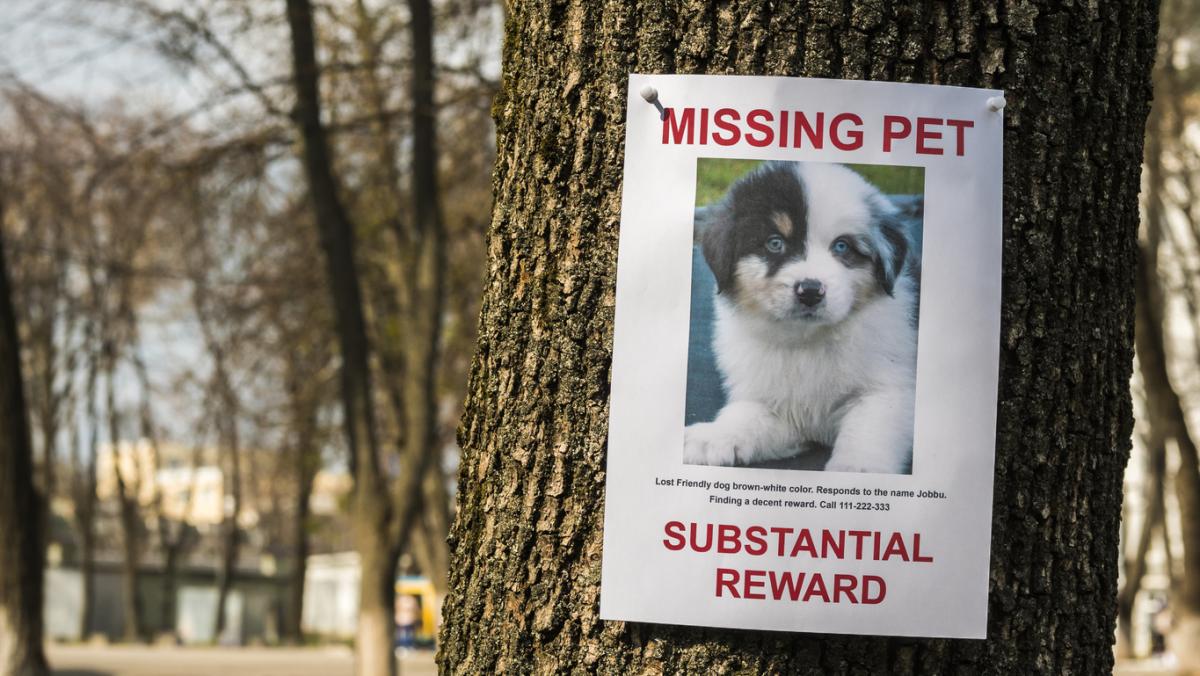
Maybe he scaled a fence that you were sure was high enough. Maybe she slipped out when your child held the door open a little too long. Maybe he yanked the leash out of your grasp in pursuit of a small animal. Maybe thunder sent her running off in a panic, faster than you could catch her.
Losing track of a pet can happen to even the best of pet parents. But that’s a small comfort to those directly facing this potential tragedy.
“When a pet goes missing, a lot of people don’t know what to do and feel helpless,” notes Dan Brian, community outreach manager at Riddle & Brantley, a personal injury law firm dedicated to offering no-cost options to help North Carolina residents find their pets. “It’s a heartbreaking situation. Having help and support is of the utmost importance.”
If you’ve thoroughly checked your home and yard for obscure hiding or napping spots, and you’re sure your pet is truly missing, resist the urge to give in to fear or despair. There is hope. Many lost pets are eventually found, especially if pet parents act quickly and make wise decisions.
Search the neighborhood
Take a walk or a slow drive around the neighborhood to see if you can spot your pet. If he doesn’t appear, enlist as many people as you can to help you and expand your search. Give your helpers your contact information and show them a recent picture of your pet. Search side streets, nearby wooded areas and ask for permission to search backyards.
Advise your helpers not to chase or call out to your pet if they do spot him; lost dogs are often frightened dogs, and doing so could prompt them to run. Instead, they should contact you and let you know where they saw him.
Engage social media
The number one way people find lost pets is through social media, particularly Facebook, and the popular neighborhood site Nextdoor.
Your social media posts should contain a recent high-quality photo, a short description, and one piece of personal contact information, such as an email address or a phone number. Describe your pet, but don’t give out every detail; smaller, lesser-known details can help you determine whether a responder really has your furkid.
When posting on your Facebook profile, make sure you tag your neighbors and friends, and change the settings so that the post is shareable. Look for community Facebook groups to post in. Share in surrounding community groups in addition to your own, as dogs can cover several miles in a single day, and larger dogs can move even faster and farther than smaller dogs. There are also numerous lost dog groups on Facebook–find those in your area, share your post, and scour them for found pets.
Remember this isn’t a one-and-done; you need to keep posting updates – dog still lost, dog last seen, dog found.
Advise your neighbors
Make sure to knock on doors to let your neighbors know that you’re looking for your pet, and give them your contact information. This way they will be on alert, and can reach you quickly if he turns up in their yard. They can also check to see if your pet has become trapped in their closed garage or shed.
Alert vets and shelters
Contact animal control, your local shelters, and your local veterinary offices to alert them about your pet. One of the first things people do when they find lost pets is bring them to a vet to check for a microchip, and if shelters know to look out for your pet, he’s much more likely to be spotted and set apart. Describe your pet well and provide your contact information, as well as that of a friend or family member to call in case you can’t be reached. Check back daily if possible for any new updates.
Paper your area in flyers
It’s an old technique, but it’s tried-and-true. Create a flyer with the same information in your social media posts. Post the flyers in high-traffic areas around your neighborhood and town, like grocery stores, convenience stores, restaurants, libraries, and community bulletin boards. Pet friendly places like dog parks, dog bakeries, and pet stores are good options as well, as they’re frequented by fellow pet lovers who will likely be motivated to help you.
Seek out helpful organizations
A number of organizations have dedicated themselves to help reunite separated pets with their pet parents. For example, Riddle & Brantley, a longtime pet advocate whose founding partner often features his own dogs in the firm’s commercials, has a Missing Dogs page on its website that allows visitors across North Carolina to upload information and photos of their lost dogs in an effort to help find them.
“As a personal injury law firm, our mission is to keep families safe, and that, of course, includes their pets,” says Brian. “We developed our lost dog initiative to help find and reunite missing dogs across North Carolina with their human companions. We also decided to use our technical expertise and budget to run Facebook ads that raise awareness for lost dogs in their last-seen locations — at no cost to the caregiver. If we can help reunite even one dog with its owner, that's worth it to us.”
Be diligent and patient in your search. Success stories have occurred after hours, days, months, and sometimes even years. There is always hope that your precious pet will be found.
Photo Credit: istock/StockSeller_ukr